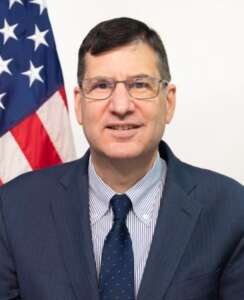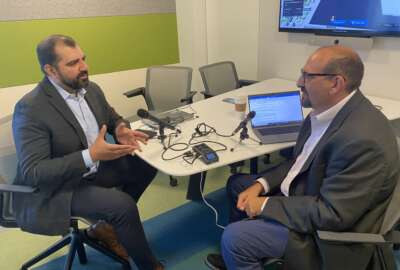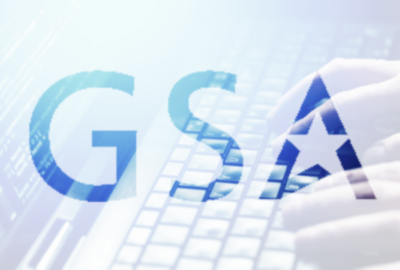GSA’s Federal Acquisition Service achieves $100 billion status
Tom Howder, the soon-to-be acting commissioner of the Federal Acquisition Service at GSA, said expanding the Transactional Data Reporting (TDR) program is one of...
For the first time ever, the Federal Acquisition Service in the General Services Administration topped $100 billion in revenue last fiscal year.
That is $10 billion more than FAS brought in during fiscal 2022.
Tom Howder, the current deputy and soon-to-be acting commissioner of FAS, said the revenue numbers only tell part of the FAS success story.

“We continue to grow all over the place. $6 billion in savings that we produced for the American taxpayer through our various programs. And here’s a percentage for your 46%. That’s the percentage of dollars fast awarded that would be eligible small businesses. So for the 13th consecutive year, GSA has earned an A or A+ from the Small Business Administration in terms of our small business utilization. So lots of success there,” Howder said during a recent ACT-IAC webinar. “I would also mention with the Assisted Acquisition Service (AAS), the obligations were also at $18 billion, and obligations are an indicator of future revenue. We’re going into the [new] year strong with AAS going to continue to grow. But that wasn’t the only place that we had successes; our general supplies and services had an outstanding year as well, really aggressive growth centered on the retail operations front, especially. But also the requisition channels are growing, especially as the needs for the Department of Defense have increased over the last couple of years. And we’ve taken advantage of that and help them out as well.”
Howder said reaching the $100 billion mark was surprising to some extent, but FAS has continually seen an increase in sales over the past decade.
Several ongoing initiatives contributed to FAS’ growth, including outgoing FAS Commissioner Sonny Hashmi’s three “North Star” goals:
- Make it dead easy to do business with FAS
- Creating tremendous value for our customers
- Creating a thriving, innovative, compliant and equitable marketplace
Hashmi announced earlier this month he would be leaving as FAS commissioner on Dec. 29.
Howder said part of FAS’ success is how it has positioned itself in the marketplace over the last few years.
“A good example of that is the small business innovation research (SIBR) program, which a few years ago was zero for us. Now, I think our obligation level is over a billion dollars,” he said. “I see us moving into the ISR, intelligence surveillance and reconnaissance. We hadn’t had much business with that community in the past, and we’ve really been able to move forward there. I’d say just the general growth in DoD. So as our military needs are increasing around the world, we’re helping them with the support of that. Obviously, we don’t provide anything like weapons systems or things that go boom, but there’s a lot of other things that DoD requires and we were able to fill those needs. I think those are a lot of the organic growth areas that we have.”
FAS continues to receive good feedback from industry and agency customers, and uses that data to improve how it delivers services.
Satisfaction scores rise
Howder said customer feedback was one driver of its recently announced reorganization. FAS is moving from a regional structure to one entirely focused on serving agency and industry customers much differently than ever before.
“I think when you’re strong that’s the best time to look at yourself and do some introspective examination and figure out where you will have to go. You don’t want to deal with that when you’re backed into a corner because then you’re going to just have to like grab on to something. We wanted to really go through this deliberately and figure it out,” Howder said. “Frankly, it was no surprise we were going to go this direction. You could see this coming years ahead of time. We had already been gravitating in this way for a long, long time. We had to put in place some pretty dysfunctional processes to plaster over the cracks that were happening in the existing organization that we needed to change.”
While 2023 data is not yet available, Howder said the 2022 customer and industry satisfaction survey results demonstrated FAS’ progress. He said satisfaction scored hovered between 75% and 80%.
“We actually use this data considerably. First of all, we hardwire results into our senior executive performance plans. We asked a whole variety of different questions on these to pull out where our strengths are, but also where our weaknesses are, and based on that, we have a team in the Office of Customer and Stakeholder Engagement (CASE) that parses through the data, and then pulls out what are our targets of opportunity. What are those things that we can affect the highest return on investment, in terms of actually impacting our customers and impacting industry?” Howder said. “Then each of the organizations, all of our business lines, put together plans based on that data. They’re charged with achieving actual concrete things. I’ll give you an example. A couple of years ago, we had been getting a lot of feedback that our customers didn’t really know where their orders were. If you use Amazon or something like that, you can track the status of your order and see where it is. So we put in place a program to do that. We started working with our industry community to get that order status into our systems, and the customers really liked that we can actually see the needle move in terms of satisfaction for that.”
For 2024, Howder said several priorities are on tap, including the expansion of the Transactional Data Reporting (TDR) program, the continued growth in the use of the 4P tool for contract awards and modifications and the full implementation of the GSA Advantage! catalog effort.
TDR expansion coming
The TDR expansion continues to be a hot-button issue between FAS and the agency’s inspector general.
Howder said GSA is taking the IG’s recommendations to heart as it improves the program beyond the seven-year-old pilot.
“We have different buckets that we’re looking at right now. So for non-configurable products, like piece of paper or pencil, it’s easier than, say, a configurable product, like a laptop that has lots of different options, which in turn is easier than services. We’re really digging into where can we get the best quality. How do we get the best quality? We have different groups that are looking at all those different permutations in order to figure those kinds of things out,” he said. “We are actually getting some pretty good TDR data. We’ve spent most of 2023 really, really drilling in on the quality of the data, and if there are people in the audience here who are with companies that deal with a lot of product, you may have actually heard from us in terms of we’ve scrutinized the TDR data coming from certain companies, and we’re trying to figure out how we can improve the match quality and things like that.”
Howder said FAS has regular conversations with the IG about their TDR plans, including he personally has a monthly meeting with his counterpart in the oversight office.
“We do seek input from them. Ultimately, we do have to make decisions and we don’t want to have management by IG,” he said. “I don’t think they want to have that either. So we share with them to the extent that we solicit feedback from them, to the extent that we can, and we always have a conversation.”
Copyright © 2025 Federal News Network. All rights reserved. This website is not intended for users located within the European Economic Area.
Jason Miller is executive editor of Federal News Network and directs news coverage on the people, policy and programs of the federal government.
Follow @jmillerWFED







